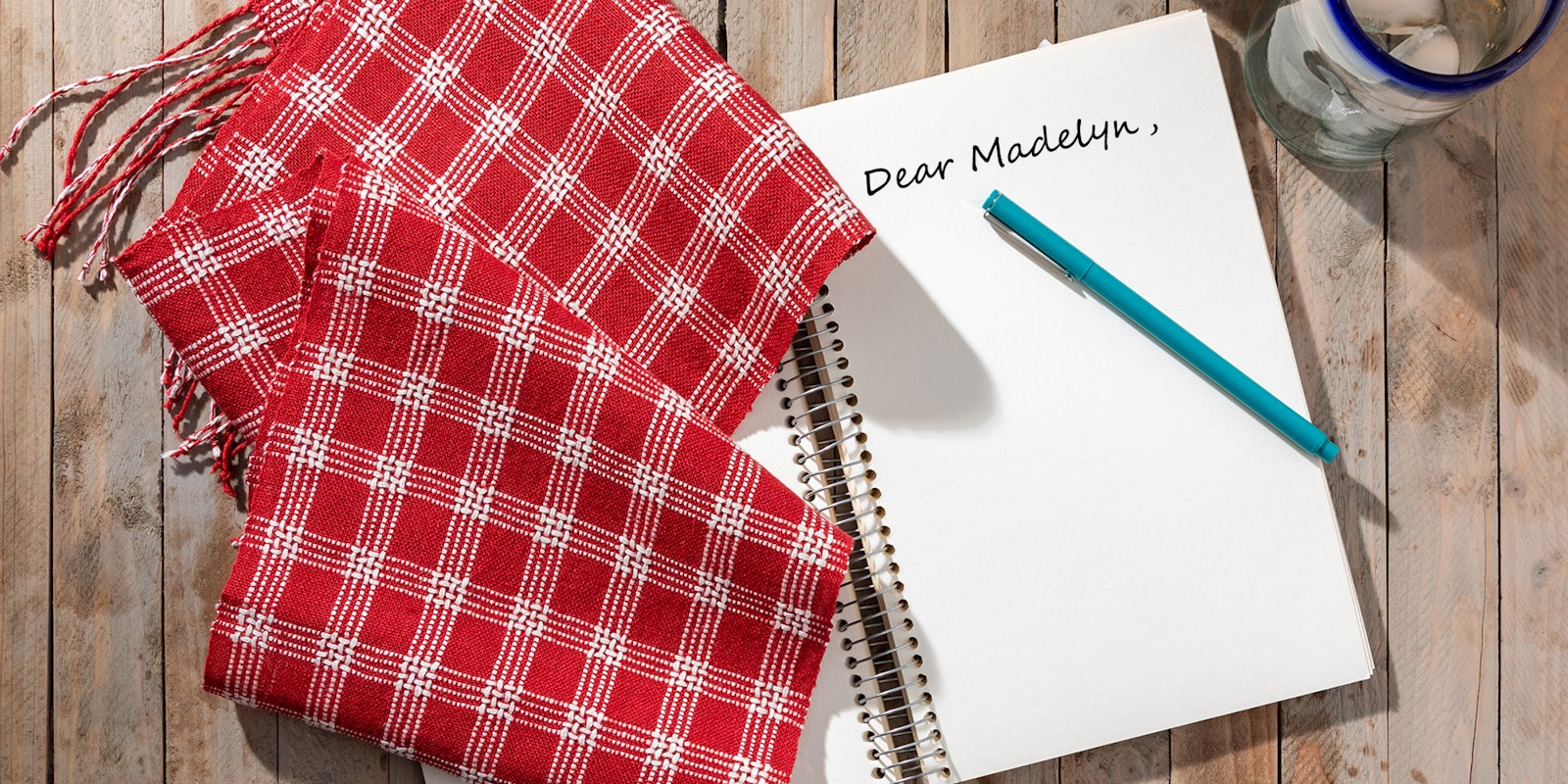Hi Madelyn!
I watched your video "Warping Your Loom" and noticed that you didn't talk about how to measure a guide string and take different paths around the warping board to get a warp of a specific length, even to a designated number of inches. Do you ever do this?
—Sarah McArdle
Hi Sarah!
I'm thinking that you would want to calculate an exact number of inches in a warp's length if you had a very limited amount of a specific yarn you wanted to use or a very expensive yarn you did not want to waste. In that case, you would want to know exactly the minimum amount of loom waste for you and your loom, adding that to the woven length required for your finished fabric. You'd probably also want to warp back to front so that the end of the warp that is first wound on the warp beam does not require knots, which would add to loom waste, and tie onto the front apron rod using the lashing method (tying overhand knots in small bouts and passing a lashing cord through the bouts and around the front apron rod). A dummy warp is an additional option (a warp that is wound on the warp beam to which you tie the ends of the precious yarn).
I have to confess that I have never done this. I am a "the longer the warp, the better" sort of weaver. I've discovered that if I plan a warp for a specific project and weave it, I develop ideas about variations I want to use on that warp while I'm weaving. Usually, the second and third pieces I weave on a warp are more interesting and give me more pleasure than the planned piece. If I take a workshop, I always put on a longer warp than the instructions specify so I can do more sampling when I get home. One of the many delights of weaving for me is to design "on the loom," experimenting with treadling orders, weft colors, and weft setts. I'm sure that many of the weave structures we love to use were developed in this way.
However, if I did have a limited amount of a much-loved yarn or a yarn that was extremely expensive, I'd do all of the above. But I am probably more often in love with what the threads do than the threads themselves.
—Madelyn

